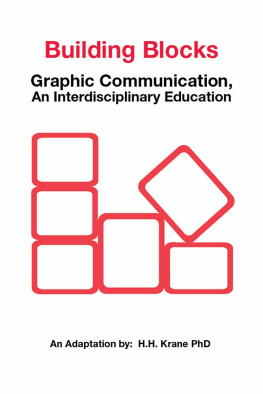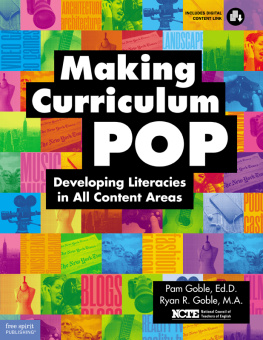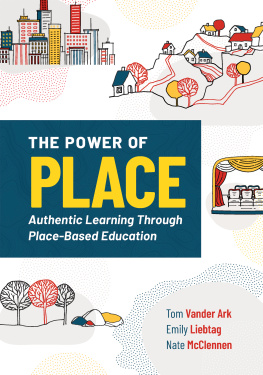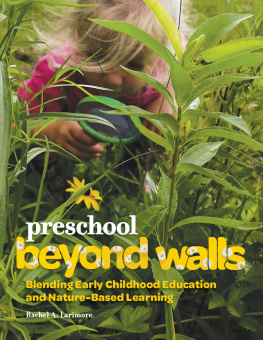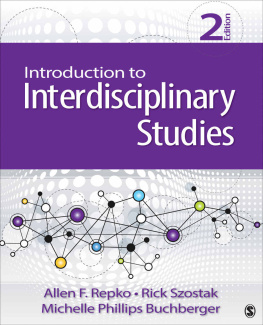Building
Blocks
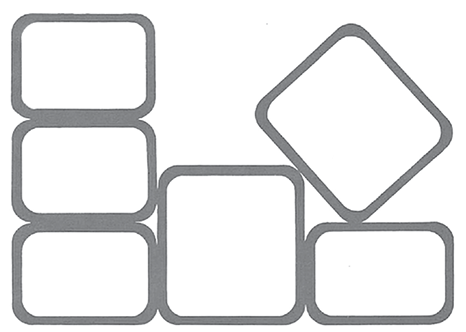
Graphic Communication,
An Interdisciplinary Education
An Adaptation by: H.H. Krane PhD
To my wife Renee and son Jonathan
Copyright 2017 by H.H. Krane PhD.
ISBN: Softcover 978-1-5245-2020-5
eBook 978-1-5245-2021-2
All rights reserved. No part of this book may be reproduced or transmitted in any form or by any means, electronic or mechanical, including photocopying, recording, or by any information storage and retrieval system, without permission in writing from the copyright owner.
Adapted from or built upon copyright material owned by the State of Victoria (Department of Education and Training). Used with permission.
All illustrations, diagrams and Cover illustration have been
drawn by the author in 2016.
Rev. date: 01/12/2017
Xlibris
1-800-455-039
www.Xlibris.com.au
700798
Contents
ICITA - INTERNATIONAL CO-OPERATION for the INTEGRATION of TECHNOLOGY and ART.
The Icita Group was originally called the VITA Group (VITA Victorian Institute of Technology and Art) formed in 1969-1970 at the Swinburne College of TAFE (now Swinburne University), in Melbourne Australia. Its foundation members included H. W. Farey, Head of the Art School at the Caulfield Institute of Technology (now Monash University), T. D. Norwood Lecturer in Engineering at Swinburne College of TAFE, H. H. Krane Lecturer in Art at Prahran Institute of Technology (now Swinburne University).
The Institute of Draftsmen published three articles called Art and Technology where these three founders of VITA Group called for educational interdisciplinary change in schooling. This early work set the premise upon which the authors later research in secondary and tertiary teaching was based.
Building Blocks first used by the author in 1978, appertains to curriculum change and is the basis of all his later research.
This document was researched and prepared by:
Harry H KRANE
Assiste d by;
David Dyson
The concepts have been endorsed by the Graphic Communication Secondary Committees of 1980 and 1981. Mrs. Gwen Stephens has assisted with the visual material. Other members of the Committees have been involved in editing this document, as well as preparing related documents, which suggest methods of applying an interdisciplinary approach, using the methods and techniques of Graphic Communication, to the learning of concepts in Language, Mathematics, Science and Geography.
The 1981 Graphic Communication Curriculum Statement, Graphic Communication: A Duality of Thinking, should be read in conjunction with this document. All teachers are encouraged to read and consider these documents, and the Graphic Communication Secondary Committee will be pleased to receive comments.
T. H. Grenfell, B.I.S.S.
Chairman
Graphic Communication Secondary Committee 1981.
All illustrations, diagrams and Cover illustration have been drawn by the author in 2016 , who wishes to extend his appreciative thanks to his former colleagues in Graphic Communication Education, the Xlibris editors, as well as his wife Renee and son Jonathan and the influence upon his later research and work at RMIT University.
THE PURPOSE OF THE BUILDING BLOCKS SERIES IS THE INVESTIGATION OF THE GROWTH OF THE NATURE OF HUMAN DESIGN IDEAS. IN SEMINAL TERMS ITS PRAGMATISM CAN BE DEFINED AS A SHIFTING EPISTEMOLOGY FROM AN ARTIST CONSTRUCTOR OF THE IDEA INTO A TECHNICAL CONSTRUCTOR WHO ACTUALISES IT INTO REAL SHAREABLE BUILDING BLOCKS TO EVOCATE AN INCREASED WELTANSCHAUUNG (WORLDVIEW) OF THE STUDENT AND HIS OR HER ENVIRONMENT. IT IS LEARNING BY D OING.
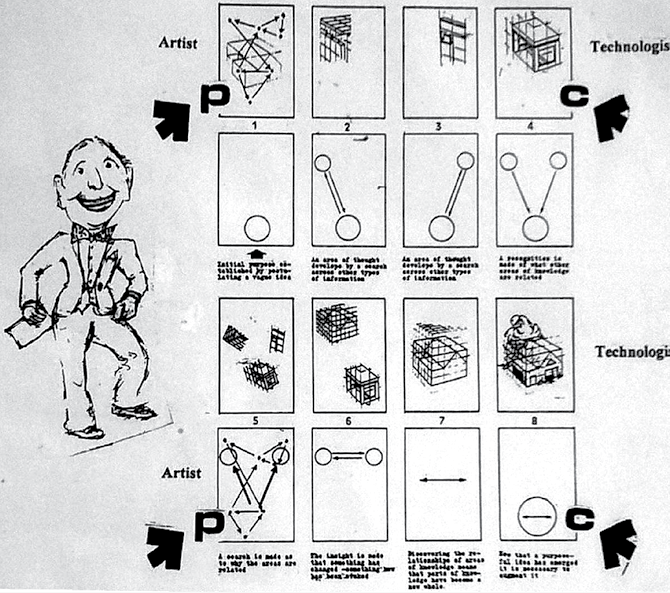
THE INTEGRATION OF ART AND TECHNOLOGY
A great deal of fine material is already available on visual or graphic design education and how it is used. For knowing how much more its applications can be for the learner, we must thank psychologists like Rudolph Arnheim (1970) for impelling his constructive art oriented philosophy into a psychology of education: of learning by doing. This has encouraged my earlier work as graphic, industrial designer and educational psychologist, to attempt to devise a psychological theory of design that can be readily used in any class-room. It resulted in a published PhD thesis and its concepts that further defined this intention which I developed into further research during my lectureship in Industrial Design at RMIT Univer sity.
Contextually, this book and subsequent publications are being up-graded as the Building Block series in the ongoing path towards such a theory, still in its developmental stages even today, from an article called Art and Technology published by the Institute of Draftsmen, Australia in 1969. This is being realized principally through existing diagrams and illustrations being substituted with the explanatory aspect of what the author describes as a duality of thinking and the ramifications of his rese arch.
The earlier research by a small Melbourne group of people who called themselves ICITA (reference), spread from its earlier beginnings the importance of learning by doing as a form of interdisciplinary thinking into my work as research consultant for the Education Department of Victoria and well into the present. I also thank the various people involved in the later development of the Graphic Communication process of converting it into a pedagogy of thinking-aboutthinking, especially to David Dyson who assisted two of my manuscr ipts.
The more succinct development to conceptualize previous research can be associated with my later published thesis namely : An interdisciplinary approach to graphic communication and a suggested conceptual basis for the resolution of the duality syndrome (1990). This thesis preceded my publication Building Blocks, Graphic Communication as Psychartechnology which, yet in manuscript form and taken from its original publication in 1978, has been re-written to be soon published for this se ries.
The authors research into a method for a design psychology took place at a time of already visible educational change as to the more desirable nature of learning. The various people involved in what was then described as Graphic Communication were highly oriented to the new technology but then saw-the-drawing-on-the-wall as learning by doing being the path to improve thin king.
The learning by doing approach through Graphic Communication was found to be catering for individual differences that are so productively obvious in the constructive method of applied designers but far less obvious in the formal classroom. It is more than a method of constructing things, it is a method of reframing ones mental representation of the external world to fit new ideas and experiences of tho ught.
Very wide extensive enterprise was shown by the farsightedness of school inspector T.H.Grenfell who headed the Graphic Communication endeavours and who initiated beneficial critical changes in education. This enabled the author to write a paper called Language across the Curriculum addressing the Language Committee of the Education Department of Victoria in 1980 to endorse research into using graphic hands-on means (learning by doing) in teaching secondary English. This was given further emphasis by a variety of Graphic Communication teachers who published their own versions of crossing the curriculum in booklets published by the Education Department. This research went apparently no further leaving a void for the present time to chang e it.
Incontestably, the many passionate teachers involved in the conversion of the subject of Graphic Communication into one of thinking-to-think and who gave so much time and effort to it, had their message not sufficiently well heard. Perhaps, this series of publications may assist in this crossing of the curriculum being seriously considered now. Graphic Communication or Visual Education adopted as the focus of investigating this constructivist nature of learning by doing was so vehemently asked for by the Russian psychologist Vygotsky (1978), among others. The underpinnings of the concept of a duality of thinking developed in the Building Blocks series has students investigating the constructivist approach of learning by doing. More importantly, it is a personal investigation of how the dual worlds of connectedness (or otherwise) become the basis of transferring ones learning into the more mature process of students actively constructing and guiding their own lear ning.
Next page
